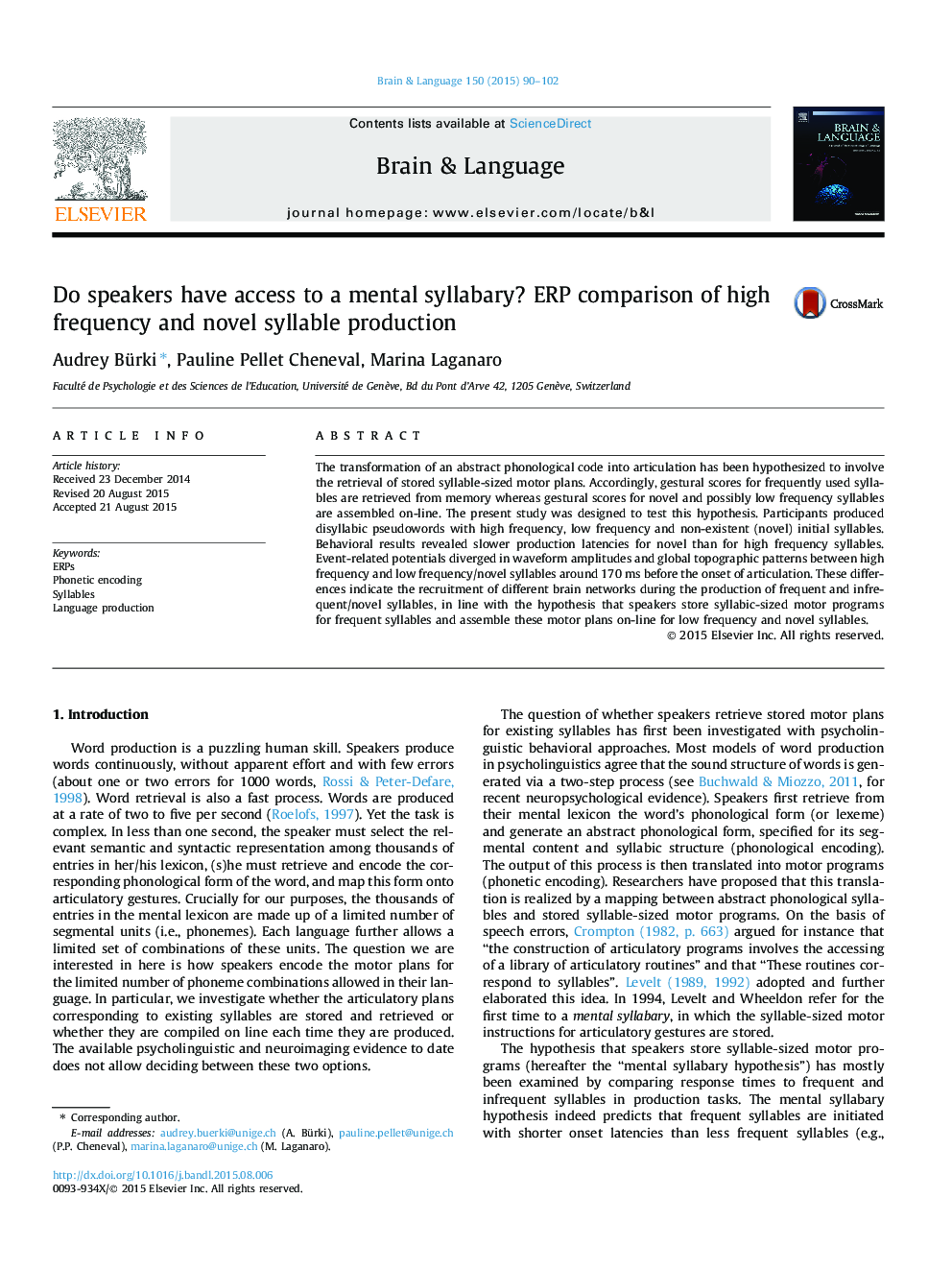| Article ID | Journal | Published Year | Pages | File Type |
|---|---|---|---|---|
| 7284034 | Brain and Language | 2015 | 13 Pages |
Abstract
The transformation of an abstract phonological code into articulation has been hypothesized to involve the retrieval of stored syllable-sized motor plans. Accordingly, gestural scores for frequently used syllables are retrieved from memory whereas gestural scores for novel and possibly low frequency syllables are assembled on-line. The present study was designed to test this hypothesis. Participants produced disyllabic pseudowords with high frequency, low frequency and non-existent (novel) initial syllables. Behavioral results revealed slower production latencies for novel than for high frequency syllables. Event-related potentials diverged in waveform amplitudes and global topographic patterns between high frequency and low frequency/novel syllables around 170Â ms before the onset of articulation. These differences indicate the recruitment of different brain networks during the production of frequent and infrequent/novel syllables, in line with the hypothesis that speakers store syllabic-sized motor programs for frequent syllables and assemble these motor plans on-line for low frequency and novel syllables.
Keywords
Related Topics
Life Sciences
Neuroscience
Biological Psychiatry
Authors
Audrey Bürki, Pauline Pellet Cheneval, Marina Laganaro,
